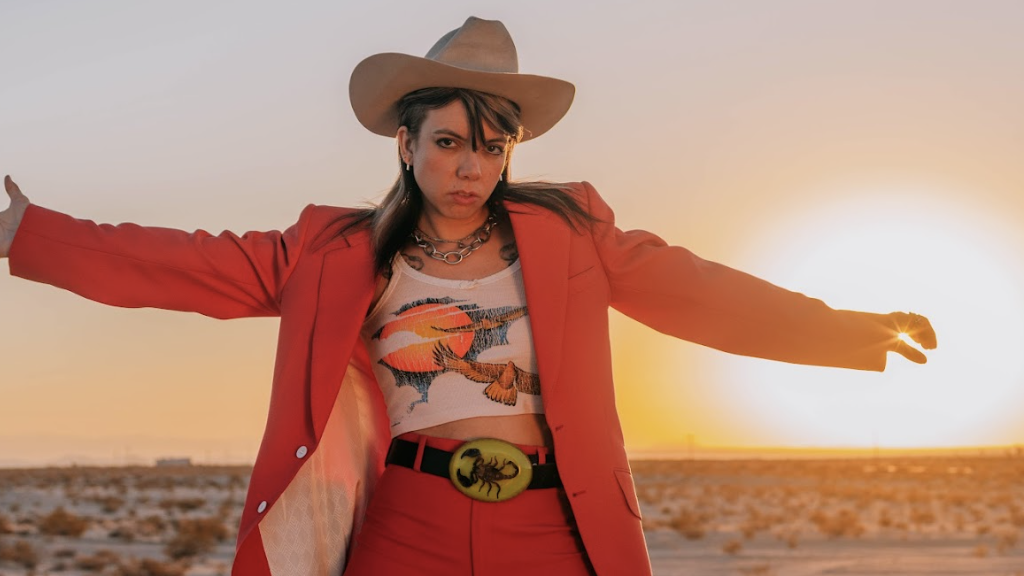

Alynda Segarra is 36, or a little less than halfway through the average American lifespan. In that
comparatively brief time, though, the Hurray for the Riff Raff founder has been something of a
modern Huck Finn, an itinerant traveler whose adventures prompt art that reminds us there are
always other ways to live.
Born in the Bronx and of Puerto Rican heritage, Segarra was raised there by a blue-collar aunt
and uncle, as their father navigated Vietnam trauma and their mother neglected them to work for
the likes of Rudy Giuliani. They were radicalized before they were a teenager, baptized in the
anti-war movement and galvanized in New York’s punk haunts and queer spaces. At 17, Segarra
split, becoming the kid in a communal squat before shuttling to California, where they began
crisscrossing the country by hopping trains. They eventually found home—spiritual, emotional,
physical—in New Orleans, forming a hobo band and realizing that music was not only a way to
share what they’d learned and seen but to learn and see more. Hurray for the Riff Raff steadily
rose from house shows to a major label, where Segarra became a pan-everything fixture of the
modern folk movement. But that yoke became a burden, prompting Segarra to make the probing
and poignant electronic opus, 2022’s Life on Earth, their Nonesuch debut. Catch your breath,
OK? We’re back to 36, back to now.
During the last dozen years, these manifold tales of Segarra’s voyages have shaped an oral
folklore of sorts, with the teenage vagabonding or subsequent trainhopping becoming what some
may hear about Hurray for the Riff Raff before hearing the music itself. Segarra has dropped
tidbits in songs, too, but they always worried that their experiences were too radical, that
memories of dumpster diving or riding through New Orleans with a dildo dangling on an antenna
were too much. But on The Past Is Still Alive, Segarra finally tells the story themselves,
speckling stirring reflections on love, loss, and the end or evolution of the United States with
foundational scenes from their own life.
There is, for instance, sex and communal musicmaking on an island of San Francisco trash
during “Snake Plant (The Past Is Still Alive),” a charged attempt to reckon the erosion of our
childhood innocence with a belief that a worthwhile future is still possible. Or there are the cops
and the trains and the long walks down empty Nebraska highways to escape said cops during
“Ogalla,” the cathartic closer that tries to maintain the spirit of the past while actually surviving
in the now. The Past Is Still Alive is the record of Segarra’s life so far, not only because it
chronicles the past to understand the present but also because it is the most singular and magnetic
thing Hurray for the Riff Raff have yet made. A master work of modern folk-rock, The Past Is
Still Alive resets the terms of that tired term.
In March 2023, when Segarra returned to the North Carolina studio of producer Brad Cook to cut
The Past Is Still Alive, they weren’t so sure about the session, if they could even handle it. Only a
month before, their father, Jose Enrique (Quico) Segarra, had died. A musician himself, he had
long been fundamental to Segarra’s songs, a point of inspiration and encouragement. What’s
more, Segarra had made Life on Earth with Cook, and drummer Yan Westerlund had long toured
in Hurray for the Riff Raff. But much of the band they’d assembled for these sessions—guitarist
Meg Duffy, fiddler Libby Rodenbough, saxophonist Matt Douglas, multi-instrumentalist Phil
Cook—were unknown quantities. At the edge of catastrophe and in the headlock of grief, could
Segarra share these bone-deep songs among strangers?
Venue
Manchester M1 7HE
UK
